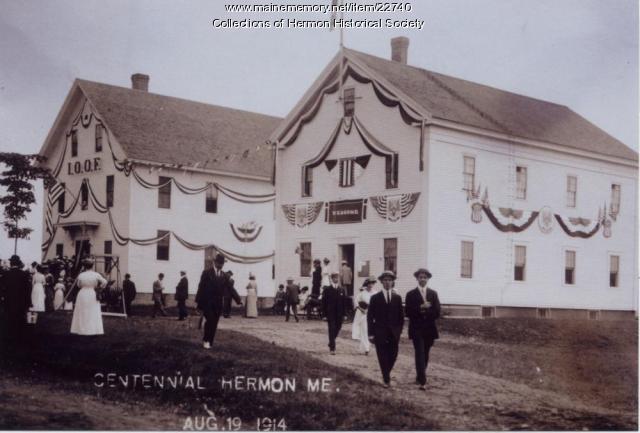Keywords: Community House
Item 108952
Community Center, Frye Island, ca. 1970
Contributed by: Frye Island Historical Society Date: circa 1970 Location: Frye Island Media: Photographic print
Item 100286
Franklin Towers, Portland, 1969
Contributed by: Portland Housing Authority through Maine Historical Society Date: 1969-09-02 Location: Portland Media: Photographic print
Item 65229
73-75 Newbury Street, Portland, 1924
Owner in 1924: David Finkelman Use: Apartments
Item 36791
23 Chestnut Street, Portland, 1924
Owner in 1924: Trustee of Portland Methodist Episcopal Society Use: Dwelling - Three Family
Item 151079
Contributed by: Maine Historical Society Date: 1942–1944 Location: South Portland Client: Federal Public Housing Authority Architect: John Howard Stevens John Calvin Stevens II Architects
Item 151579
Waterford Library, Waterford, 1937
Contributed by: Maine Historical Society Date: 1930–1937 Location: Waterford Client: unknown Architect: John Calvin Stevens and John Howard Stevens Architects
Exhibit
Photographer Elijah Cobb's 1985 portfolio of the Laura E. Richards House, with text by Rosalind Cobb Wiggins and Laura E. Putnam.
Exhibit
KVVTI's Gilman Street Campus, 1978-1986
The Gilman Street building began its life in 1913 as Waterville High School, but served from 1978 to 1986 as the campus of Kennebec Valley Vocational Technical Institute. The building helped the school create a sense of community and an identity.
Site Page
View collections, facts, and contact information for this Contributing Partner.
Site Page
The Freedom & Captivity digital collection in the Maine Memory Network, and the complete digital archive housed at Colby Special Collections, is a repository of personal testimonies, ephemera, memorabilia, artifacts, and visual materials that capture multiple dimensions of the experiences of incarceration for individuals, families, and communities, as well as for survivors of harm.
Story
Redlining and the Jewish Communities in Maine
by David Freidenreich
Federal and state policies created unfair housing practices against immigrants, like redlining.
Story
Documenting Portland's Neighborhood Bars
by David Read
Peanut House, Sportsman's Grill and a proposal to document Portland's Neighborhood Bars
Lesson Plan
Building Community/Community Buildings
Grade Level: 6-8
Content Area: Social Studies
Where do people gather? What defines a community? What buildings allow people to congregate to celebrate, learn, debate, vote, and take part in all manner of community activities? Students will evaluate images and primary documents from throughout Maine’s history, and look at some of Maine’s earliest gathering spaces and organizations, and how many communities established themselves around certain types of buildings. Students will make connections between the community buildings of the past and the ways we express identity and create communities today.
Lesson Plan
Longfellow Studies: The Writer's Hour - "Footprints on the Sands of Time"
Grade Level: 3-5
Content Area: English Language Arts, Social Studies
These lessons will introduce the world-famous American writer and a selection of his work with a compelling historical fiction theme. Students take up the quest: Who was HWL and did his poetry leave footprints on the sands of time? They will "tour" his Cambridge home through young eyes, listen, and discuss poems from a writers viewpoint, and create their own poems inspired by Longfellow's works. The interdisciplinary approach utilizes critical thinking skills, living history, technology integration, maps, photos, books, and peer collaboration.
The mission is to get students keenly interested in what makes a great writer by using Longfellow as a historic role model. The lessons are designed for students at varying reading levels. Slow learners engage in living history with Alices fascinating search through the historic Craigie house, while gifted and talented students may dramatize the virtual tour as a monologue. Constant discovery and exciting presentations keep the magic in lessons. Remember that, "the youthful mind must be interested in order to be instructed." Students will build strong writing skills encouraging them to leave their own "footprints on the sands of time."




















